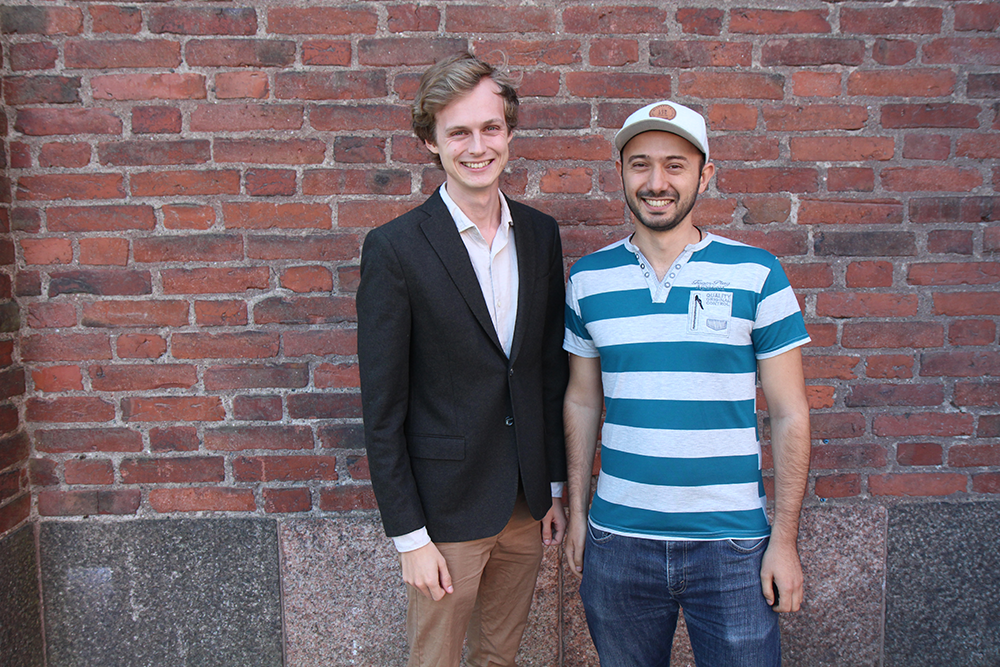KTH startup accelerates image annotation

Based on AI research from KTH, this team has developed one of the fastest image annotation systems on the market. Here’s another KTH startup to keep track of: meet Superannotate AI.
Artificial Intelligence (AI) is increasingly important for almost any larger company, especially in the automotive and robotics industries. The ability to “see” in self-driving cars and robotics applications is built on mathematical models and is dependent on annotated images, for example to predict and determine the location of other vehicles or pedestrians walking by the side of the road.
Although the results of these AI systems are impressive, parts of the production chain are still very primitive and costly. A computer requires hundreds of thousands of annotated images in order to learn to distinguish between different objects. Such annotated images are the fuel of today's AI systems. Many high-tech companies have thousands of employees that use old-fashioned manual methods to create these sample images. This is very time-consuming and laborious, and hence, very costly.
- This sets a high threshold for entry, and inhibits wide-spread use of vision-based AI technologies, says Vahan Petrosyan, former PhD student at KTH and of the founders of Superannotate AI.
Visit Superannotate AI's website!
10-20 times faster than other systems on the market
The team behind Superannotate AI consists of former KTH PhD student Vahan Petrosyan, his brother Tigran Petrosyan, a graduate of ETH Zurich, and KTH student Oscar Örnberg. Their tool is based on patented algorithms and Vahan's Ph.D. research.
- We have constructed a novel image-annotation tool that accelerates the annotation process 10-20 times and that, at the same time, provides superior accuracy. Compared to other tools on the market, our tool uses a fast self-improving AI algorithm that reduces the job of the human annotator to a simple one-click-selection of objects, says Vahan.
After putting some initial work into the project, the team reached out to KTH Innovation in late 2017 to see if the findings could be commercialized. There, they got in contact with Business Development Coach Håkan borg, who says:
- Superannotate AI’s market potential is large, since companies rely on annotated images to train their AI systems. It´s exciting to see that researchers from KTH have come up with such an innovative technology in this fast-growing area.
Rapid development
Superannotate AI applied and was accepted to Batch 8 of KTH Innovation’s pre-incubator program. With the added structure and network opportunities given by the program, development has been rapid.
- We’ve learned a lot from the KTH Innovation pre-incubator program, says Oscar Örnberg. Now, we know better what running a startup means and what is takes, and it’s been great sharing the experience with other teams in the same stage as us.
Superannotate AI has already been incorporated and has obtained funding from external investors. They have a number of pilot customers that they hope to convert into paying customers, and the plans for the future are ambitious. Alongside developing their existing system to perfection, the team plans on releasing a system for video annotation, which would be among the very first in the world.
Silicon Valley-bound
The spring of 2019 will be a particularly exciting time. Superannotate AI has been accepted to Berkeley Skydeck, one of the best accelerator programs in the world. During six months, Vahan and Tigran will relocate to Silicon Valley, with the aim of securing further funding, getting to know the American market and getting closer to their customers. Oscar keeps working from Sweden while finishing his Master in Engineering Physics.
- Our main focus is on tasks that require human vision and perception. Automating such tasks have, up until very recently, been impossible. However, recent breakthroughs in computer vision have enabled a vast range of applications, like self-driving cars and automated medical diagnosis tools, says Vahan.
Oscar adds:
- Many companies today see AI as an obstacle instead of a possibility. We want to make AI more accessible to companies.

